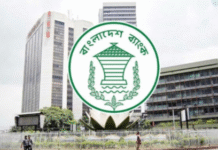Over the past five months there has been a 20% drop in cattle heads crossing the border from Indian over into Bangladesh.
Border Guard Bangladesh (BGB) officers apprehend that within a few months the influx of cows may come to a halt.
They also feel, however, that the fall in informal trade with cattle heads will bring the border killings down by 90%.
Dhaka’s beef traders say the decline in imports of Indian cows has already impacted the market. In all the retail and wholesale markets, the price of cows has gone up by 30% to 40%.
Beef prices have gone by by Tk 50 to Tk 80 per kilogram. Traders are thinking of brining in cows from Nepal, Bhutan or Myanmar.
It is feared that thousands of people connected to the trade will be rendered jobless if the import of cows remains disrupted. The cattle markets around the border areas will shut down. The people living near the border will then turn to illicit trade, be it drug dealing in Phensydyl and Yaba, locals expressed apprehensions.
Tanneries will be hit hard by the fall in cow import. Leather production will be halved. Then there is the issue of protein deficiency.
According to the National Board of Revenue (NBR) and BGB, transactions of about Tk 300 crore (Tk 3 billion) takes place in this sector.
Official records state in 2014, a total of 20 lac 32 thousand (2.03 million) cattle heads came into the country. In 2013 this was 23 lac 74 thousand (2.37 million).
That means, on average about 2 lac (200,000) cows enter every month. In January this fell to 1 lac (100,000). In February it was only 48,4350. In March 44,945 cows were imported. The number in May hasn’t been ascertained as yet, but it will not be more that 20,000 said concerned officials.
The 4 February issue of the The Times of India reported that on 2 February Indian home minister Rajnath Singh visited the border area and instructed the head of BSF (Border Security Force) Ashish Mitra to put an end to cow smuggling. Since then the border security has tightened for cows.
Assistant research director at Centre for Policy Dialogue, Khandakar Golam Moazzem, is carrying out research on cow trade. He told Prothom Alo, talks are on with India to open up the cattle market, but the talks are getting complicated. The time has come for Bangladesh to think of alternatives, whether Bangladesh will import beef or meet the demand by other means.
BGB director general Major General Aziz Ahmed told Prothom Alo, it seems that the entrance of cows from India will come to an end very soon. Rather than looking towards other countries, attention must be paid to stepping up cattle production within the country itself.
The BGB official said, border shootings will fall too if the influx of cows is stopped. About 90% of the shooting is to do with the cattle trade. From 2009 till 2013, a total of 288 people were shot dead along the border. In 2014 the number of killed was 40. In the five months till May this year, 18 people died along the border.
According to NBR officials and also the livestock department, about 50 lac (5 million) cows are slaughtered every year in Bangladesh. About half of this comes from India. But India has never given approval for cow export due to the religious sentiments of the majority of its population. Under the circumstances, the government opened up a corridor at the India-Bangladesh border to keep the beef market stable. The cows coming from that side of the border are first kept at pound where the customs officers state that the cows are without any owners and so are “confiscated”. There is a little formality of recording these confiscated cows as state property. Then these “state-owned confiscated cows” are sold to the cow traders for Tk 500 each. In reality the cow traders are buying the animals from the cow smugglers and pay the government Tk 500 for a receipt. This is the way cows are brought legally into Bangladesh.
India does not recognise this trade. There are 3 corridors to bring in cows from India, at 12 border points in Rajshahi, nine in Jessore, four in Khulna, and three each in Sylhet and Chittagong.
Lt Col Abdur Rahim, commander of 23 BGB in Jessore, told Prothom Alo that every day 2500 to 3000 cows would come in through the Putkhali, Rudrapur and Agraghulat corridors in Jessore. Now this has more or else come to a close. He said the thousands of people involved in this trade will now turn to smuggling. This will increase the smuggling of narcotics such a Phensydyl. The law and order situation at the borders may deteriorate.
Bengal Meat exports beef from Bangladesh. The firm’s head of corporate sales Syed Hasan Habib told Prothom Alo, there will be problems in export if cows do not come from India. As it is, beef prices have increased. If farmers begin rearing cows from today, it will take three years to meet the 20 lac (two million) shortfall in livestock.
President of Bangladesh tannery association Shaheen Ahmed told Prothom Alo, 20 lac (two million) cows come in from India every year. If this is stopped, the tanneries will get two million less hides a year. This will bring production down by half. Already the impact has hit the industry.
In the city markets, beef sold at Tk 320 per kg in January. Within a matter of five months, the price has gone up by Tk 70 to Tk 80 per kg.
President of the Consumers Association of Bangladesh (CAB) Golam Rahman told Prothom Alo, “There is no easy solution at the moment. For the time being the additional costs will come from the consumers’ pockets.”
Secretary general of Bangladesh meat traders association Rabiul Alam admitted that beef was being sold in some markets of the city at Tk 400 per kg. He said, the beef demand was met by the local market over the past three months, but that is now dwindling.
Source: Prothom Alo










